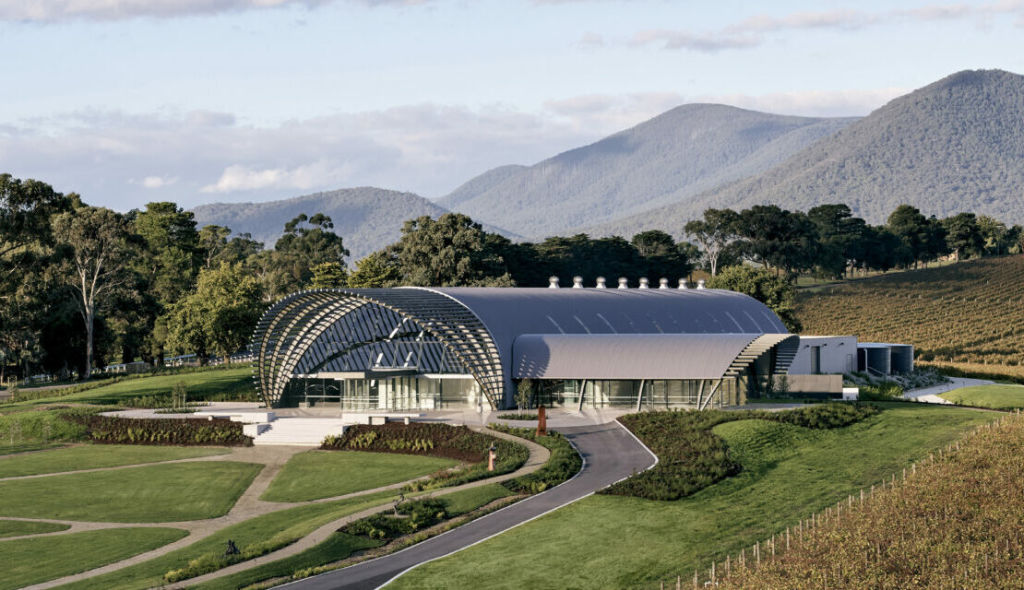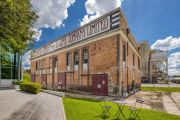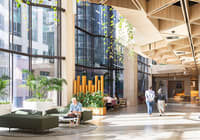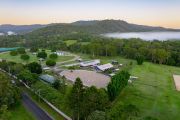
Australia well in the mix at the 2022 World Architectural Festival
In what amounts to an annual international championship of architecture – or the World Architecture Festival (WAF) – 32 Australian buildings are in contention for the 43 categories of the contest.
As it always transpires, our entries, that were selected this week from a shortlist of 253 completed buildings, highlight a different category of our current design strength.
Some years it’s houses, sometimes the boldness and originality of our hospitality or culture venues shine out. And we do have some unique cultural and community buildings to show off in 2022, no doubt.
Kerstin Thompson Architects Bundanon Art Museum and Bridge is in the Culture section, and the extraordinary multiple-arched form of the Victorian Pride Centre in St Kilda by Grant Amon Architects and BAV Brearley Architects and Urbanists is contesting Civic and Community.
But also in Civic, is the straightforward new Eden Port Welcome Centre, made of much-recycled material and designed by Cox Architecture to cite historic maritime shedding.
Right across the competition, there is a similar juxtaposition of the daringly out there and the pragmatic – even soberly functional architecture – being pitted against each other. Indeed, it might be an early effect of the COVID pandemic that a lot of less flashy buildings are becoming evident. If that becomes a paradigm shift, it will be confirmed in future WAF arenas.
In this, the 15th WAF, Australia’s numerical strength is in the five school buildings and three Sydney office buildings in the running to be judged as the best in their class. And the shifting floor plates of AMP Capital’s new office building in the enlivened Quay Quarter precinct right above Sydney’s Circular Quay, certainly constitute a fascinating new structure.
The Danish firm 3XN A/S hasn’t made this twisting “vertical village” the way it is just for effect. As the 206-metre-high Quay Quarter Tower ascends, the swivel in the five distinct
blocks of the building orient interiors to the aspects of the views that look directly at iconic Sydney scenery.
Over on Clarence Street Sydney, another office building of stimulating invention is Substation 164 in which Francis-Jones Morehen Thorp, or fjmt, has combined three different
structures: two old and a seven-level new “sculptural bubble” tower above, to make not only a distinct structure but one with so much recycled material and sustainable functioning it has a 6-star Green Star energy rating.
To give a hint at what these two – and SJB’s 52 Reservoir Street, Surry Hills entry that is also in the Office category – are up against, it’s worth a look at the very amazing and characteristically beautiful entry from the Zaha Hadid studio that is the new headquarters for a global waste management and recycling firm in the United Arab Emirates.
Sitting in sand dunes, the BEEAH Headquarters is shaped like a series of intersecting dune formations. This 9000-square-metre building that is so submissive to its setting, and that has all sorts of smart, virtual and energy-efficient qualities and as much natural light and ventilation as possible, benchmarks common among this year’s WAF entries that emphasise sustainable attributes above purely show-off architecture.
Again exemplifying the contrasts that can show up in the individual categories of the WAF are Australia’s two entries in the Production, Energy and Recycling division. A gloriously located and curvaceous winery in the Yarra Valley, by one of the country’s most admired firms, Fender Katsalidis, Levantine Hill Estate fulfils multiple hospitality and production roles while being environmentally responsive.
Meanwhile, up in the Kimberley where a native bush fruit is harvested, a simple, open-sided shed, the Nyul Nyul Packing Shed, has been designed by SJB so it can rely on solar power and daily draw 20 litres of drinking water from the humidity in the air.
Although it doesn’t come with a money prize, it is quite the accolade for any firm to win their WAF category because the competition culls entries from 50 countries. And for the first time in three years since the global pandemic stopped the process, the live judging will take place before the esteemed expert juries and thousands of global architects who will gather in Lisbon in November to fraternise, critique and be inspired by each other’s work.










